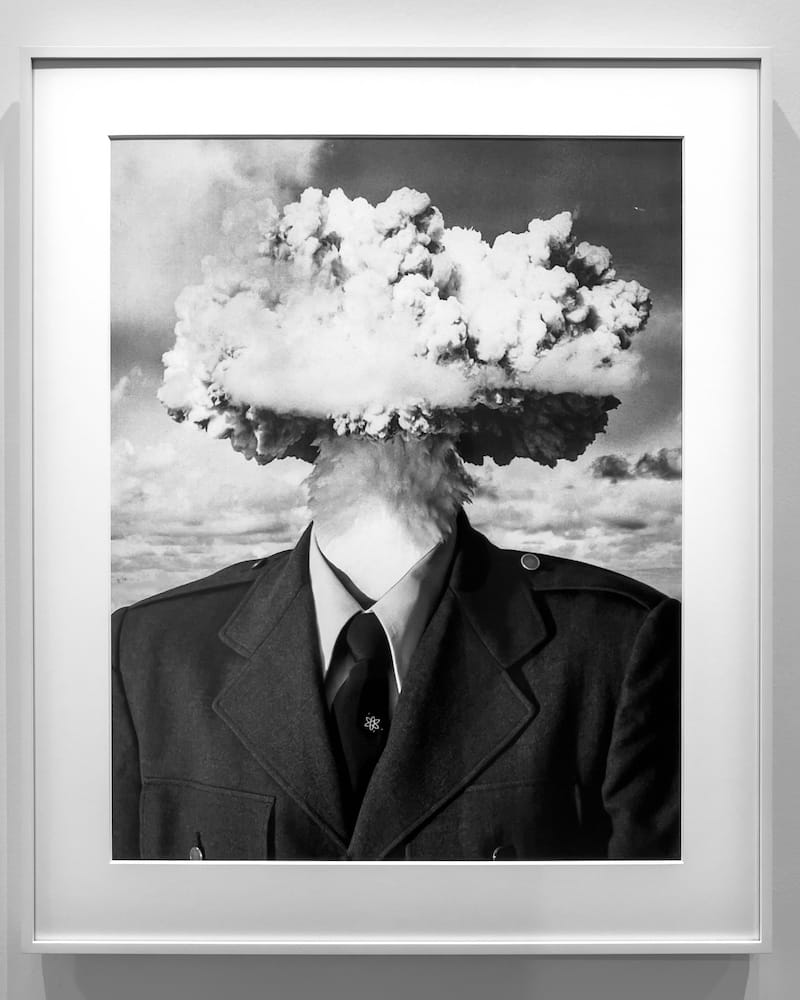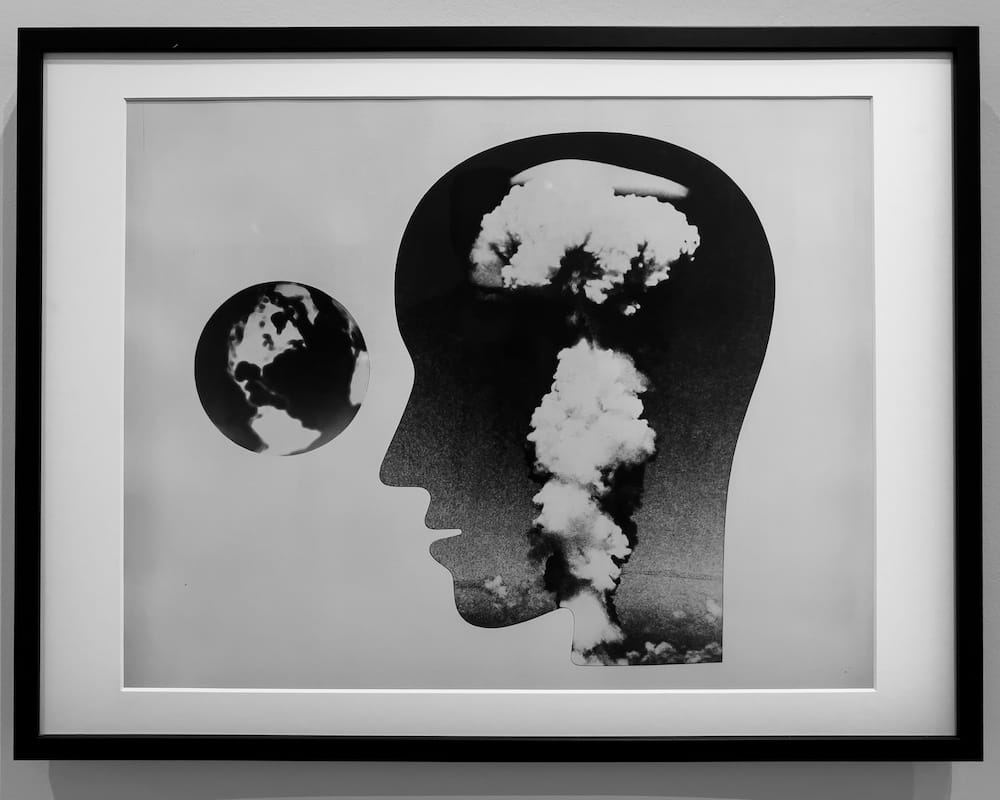
The detonation of the first atomic bomb on 16 July 1945 in the desert of New Mexico marked the beginning of a new era. There is no going back. At that moment, humanity’s increasing power reached a point where we could potentially destroy ourselves and much of life on Earth.
The Musée d’Art Moderne de Paris has organized an exhibition, which explores how artists responded to the advent of the atomic age and the invention of the atomic bomb. It’s an interesting theme that at a smaller scale could have made for an excellent exhibition, but unfortunately the organizers have cast their net too wide. There’s a painting by Francis Bacon to illustrate fear and a burnt plastic sheet by Alberto Burri possibly to illustrate damage and wounds. While I enjoyed seeing these and other works by Barnett Newman, Roberto Matta, Marcel Duchamp, Wilfredo Lam and countless others, most are only tangentially related to the theme of the exhibition. I was surprised to find a painting by Jackson Pollock, until I read that in the early 1950s the art critic Peter Blanc hailed his drip paintings as the embodiment of a new age, comparing them to the traces of subatomic particles.
The exhibition is at its most interesting where it shows artists who directly engaged with atomic theory, nuclear energy and the atomic bomb. For his “Uranium” series, Sigmar Polke reproduced the experiments of the French physicist Henri Becquerel (1852-1908), by placing radioactive uranium on photographic plates to create blurry abstract images in a variety of colours. Also included is “Uranium and Atomica Melancholica Idyll (1945) by Salvador Dali, who, in 1951, declared himself "the first painter of the atomic age".



Bruce Conner, Bomb Head (2002), Herbert Matter, Atomic Head (1946) (middle), Robert Brownjohn, Ivan Chermayeff and Thomas Geismar (1957-60) (right)
I always find it interesting to see that different artists revert to the same metaphor. For example, various artists and designers created a conceptual analogy by merging the human head, the mushroom cloud of an atomic explosion, a globe and the atom into a single image.
Of course, nuclear technology can also be put to peaceful use, whether in the form of nuclear energy or radiation therapy. The promise of the peaceful use of nuclear technology is perhaps best illustrated by the Atomium in Brussels, originally designed as the main pavilion of the 1958 World Expo. It has since become an icon of both Brussels and Belgium. The organizers also included "Poème électronique" by Edgar Varèse, Iannis Xenakis and Le Corbusier, which was exhibited at the Philips Pavilion at the 1958 World Expo and which still looks and sounds futuristic.

While nuclear energy continues to be one of the main sources of electricity production, its usage remains controversial. The Three Mile Island accident (1979), the Chernobyl disaster (1986) and the Fukushima nuclear accident (2011) brought the inherent risks of nuclear energy to the fore. Artists have responded to these risks with artworks that sometimes border on activism.
Paradoxically, the works that directly deal with nuclear threat are less interesting as artworks than the works that only indirectly deal with it. This is because the latter are more open to interpretation. The exhibition opens with “Pagan Void” (1946) by Barnett Newman, which shows a black circle on top of a white puddle against a dark green background with some streaks and drips of blue paint. It could be a reference to a cosmic or physical event or an attempt to represent what is unrepresentable. What makes it an interesting work of art is that it allows for multiple readings. To be sure, Newman had been deeply affected by World War II and the bombings of Hiroshima and Nagasaki and felt that painting was powerless in the face of such events, which is why this early work was included in the exhibition.
The organizers have brought together a lot of documentary material from film footage of atomic tests to photos of the aftermath of the atomic bombings of Hiroshima and Nagasaki, some of which actually overshadows the artworks on show. It is still incredible to see the devastation caused by a nuclear explosion. It’s hard to believe now, but during the late 1940s and early 1950s in Las Vegas, which is approximately 60 miles from the Nevada Test Site, hotels and restaurants with a rooftop bar hosted atomic blast viewing parties. The City of Las Vegas also crowned a “Miss Atomic Bomb” and in April 1953 the ballerina Sally McCloskey performed on top of Mount Charleston, with an atomic mushroom cloud in the background. As an outdoor dance performance this is hard to top.
The exhibition ends with the "Atomic Alphabet" (1980) by Chris Burden - A is for atomic, B is for bomb, E is for energy, F is for fallout, N is for nuclear, U is for uranium and X is for ray -, and an evocative image by Gerda Dassing, "The Last Photo" (1983), which shows a radiant planet Earth blurred by cosmic clouds.
L'Âge atomique. Les artistes à l'épreuve de l'histoire is at the Musée d’Art Moderne de Paris until 9 February 2025.
Links
My mini-review of Annie Jacobsen: Nuclear War. A Scenario.